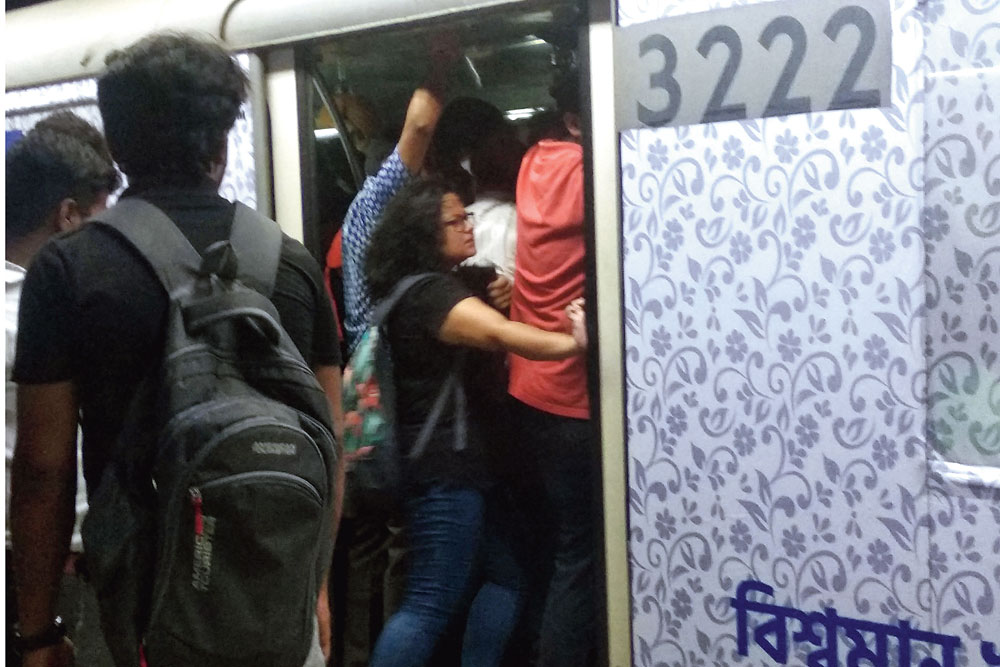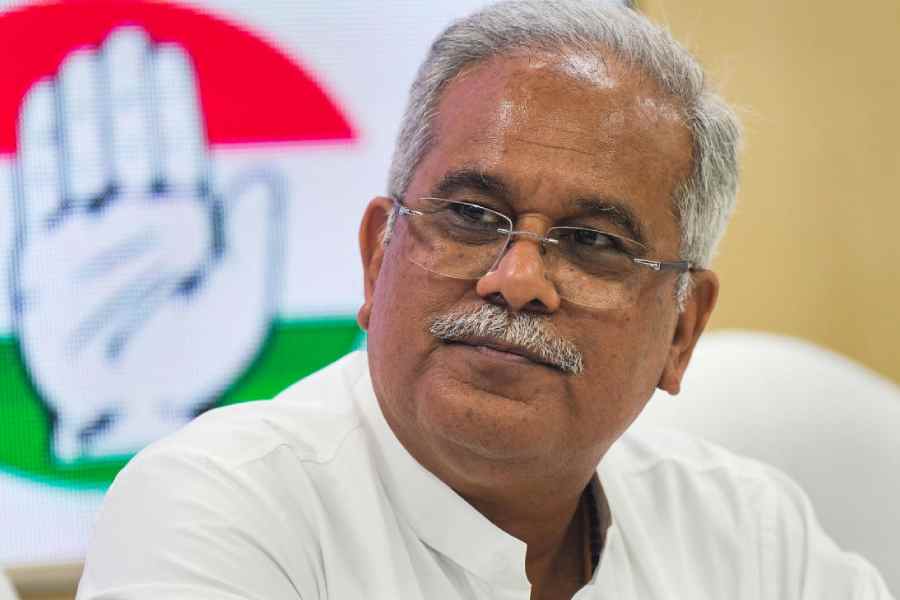The death of Sajal Kumar Kanjilal on Saturday has prompted Metro officials to invoke provisions of the Indian Railways Act, 1989, to penalise passengers who try to prise open closing doors to board the train.
In the absence of a specific provision to act against those who prise open closing doors, the Metro Railway authorities have invoked the 1989 act to penalise such offenders on the ground that they are guilty of obstructing a railway employee in the execution of his or her duty.
Four days after Kanjilal’s death at Park Street Metro station, passengers are being warned over public address systems that those trying to prise open the closing doors of a coach could end up paying a fine of up to Rs 1,000 or being jailed for six months or both.
The first such penalty was imposed on a passenger who tried to thrust in his hand to stop a closing door at the Dum Dum Metro station on Wednesday.
Forensic team
A team of officials from the state forensic science laboratory visited the Park Street Metro station on Wednesday to examine the spot where Sajal Kumar Kanjilal had met with an accident last Saturday that claimed his life.
A senior forensic official said they had divided their probe into two broad categories — one related to the details of the place of occurrence and the other was the technical aspect of the train, including the closure of the compartment doors and the speed at which the brakes were pressed.
Sources said forensic officials laid emphasis on determining the velocity of the train when the accident happened.
“The forensic officials were trying to find out the rate at which the train had accelerated from static position on the platform to the speed it attained when the accident happened.
They calculated the distance from the spot where the victim was first standing to the spot where his body was found,” said a police officer.
Another officer said the forensic officials were trying to calculate if the train’s acceleration was sudden or gradual and whether the speed of the train could have been controlled by the driver or not.
Calculating the distance between the spot where the body was found and that of the first compartment, forensic officials examined if it was manually possible for the driver to have seen that a man was hanging on to one of the compartments.
“This was to ascertain if there was any negligence or there was any structural defect in the Park Street Metro tunnel that reduces the driver’s visibility of the rear compartments,” said the officer. Forensic officials also examined the functioning of the sensors of the compartment doors.
CCTV footage that covered the spot was collected as a part of forensic evidence for analysis.
CRS probe
The commissioner of railway safety (Metro circle), J.K. Garg, who is probing Saturday’s accident, will conduct the second leg of his inquiry at the Metro headquarters in Park Street from Thursday.
Garg will record the statements of Metro staff and eyewitnesses, the official said.
The railway safety commissioner will speak to the driver and guard of the train that was involved in the accident and the staff present at Park Street station on Saturday evening.
The representatives of the Munich-headquartered firm that had provided the software for the doors of the Metro trains have also been summoned by the commissioner, said a Metro official.
Metro officials have been trying to establish that the door closed because a portion of Kanjilal’s palm was stuck inside and it was within the tolerance limit of the censors.
The tolerance limit was modified from the original German specifications.
Sources said the German firms’ engineers had already inspected the new lot of AC trains and their observations of the tolerance limit would be crucial to the probe.
Garg has also summoned representatives of the Integral Coach Factory, the railways-owned firm that makes
AC trains for Metro (including the one involved in the accident) and the Lucknow-based Research Designs and Standards Organisation, the railways’ research wing whose clearance is needed before Metro trains start commercial runs.
The first two trains of the newer lot had to wait for over two years before starting commercial runs because they had flunked a series of tests. The second train was involved in the accident.










